Where old things are
The sun was getting warmer but Julie and I were loving this rare chance to stretch our legs and walk through these dramatic rocky hills on the edge of the Kalahari Desert. The Tsodilo Hills, dubbed The Mountain of the Gods, are not just an aberration to the flat bushy nothingness of the desert – they are the ancestral home to some of the oldest inhabitants on this continent, the San people, who left their history and their story painted on these rocks. With our guide leading the way we explored these rock paintings, some of them 3,000 years old, and marvelled at what it must have been like to live here all those years ago.
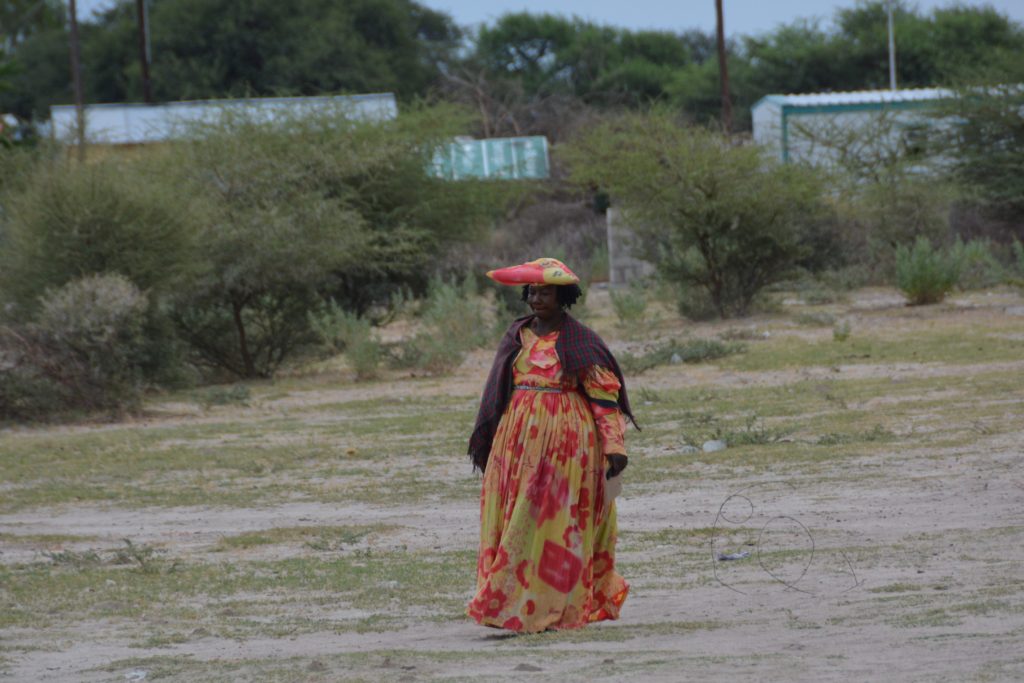
The women of northern Botswana and northern Namibia wore colourful dresses and a smart matching triangular-shaped hat
Tsodilo Hills is tucked away in the far northwest corner of Botswana, largely forgotten by most visitors, underdeveloped and controlled by the local Community Trust that charges very high fees for their monopoly. To get there we had a full day of hardcore driving, our longest in Africa, from the dusty town of Ghanzi on the edge of the Kalahari Desert. The roads were in good condition, a welcome break from crossing the desert, but the endless thick thornveld scrub, constant stream of donkeys, cows and goats who seemed to live on the road, and the scant towns or villages to view along the way made it an unmemorable day.
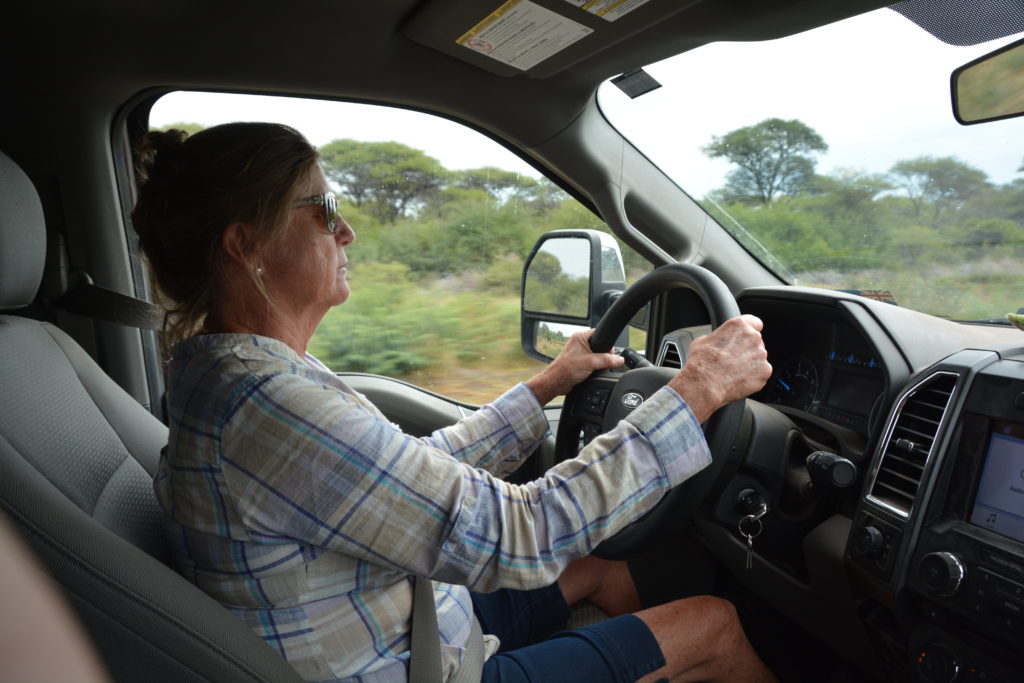
There’s been a coup! Julie puts Tramp through his paces across the long stretches of northern Botswana
The Tsodilo Hills themselves rise from the flat plains of the desert like a geographical oasis and were eye candy to our weary desert senses. We camped that night in the stark grounds in front of the museum, having been charged Rolls Royce prices for Subaru Impreza services. Never mind, the setting was stunning and the opportunity to visit such a special but obscure site made it all worthwhile.
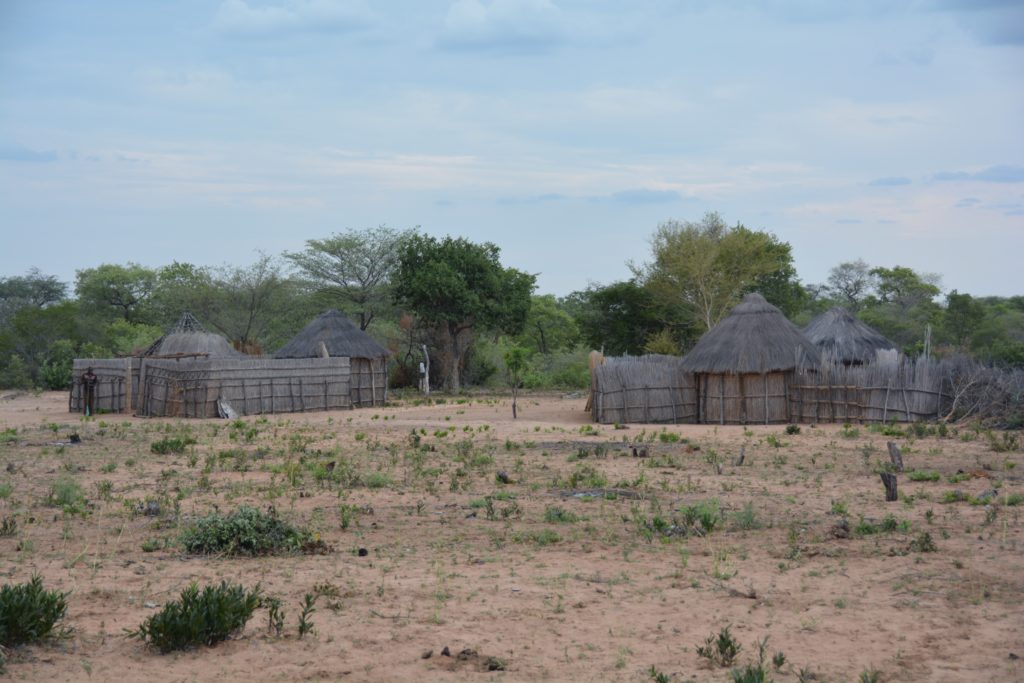
Botswana is one of the wealthier countries of Africa but in the small remote villages life still exists at the most basic level
Evidence of human habitation in the Tsodilo Hills stretches back tens of thousands of years but the San people, who were nomadic hunters and gatherers, used these hills as a spiritual place to tell their story in their rock art paintings. UNESCO recognised these paintings as a World Heritage site in 2001 and with good reason. Julie and I have always had an interest in ancient rock art and have explored many fabulous sites in Australia but this one gave us special meaning because of their remote location and harsh environment. Very few visitors make the effort to see this extraordinary site but they are missing out on a great treat.
We headed further north towards the Namibia border but our two weeks in Botswana had one more special experience – we stopped at the ferry crossing for people needing to cross the Okavango River and had lunch under a tree while the little local ferry carried cars and people from one side of this mighty river to another. It was hot, the pace was slow, the scene across the river was sublime, the people were friendly – a great African scene in every way.
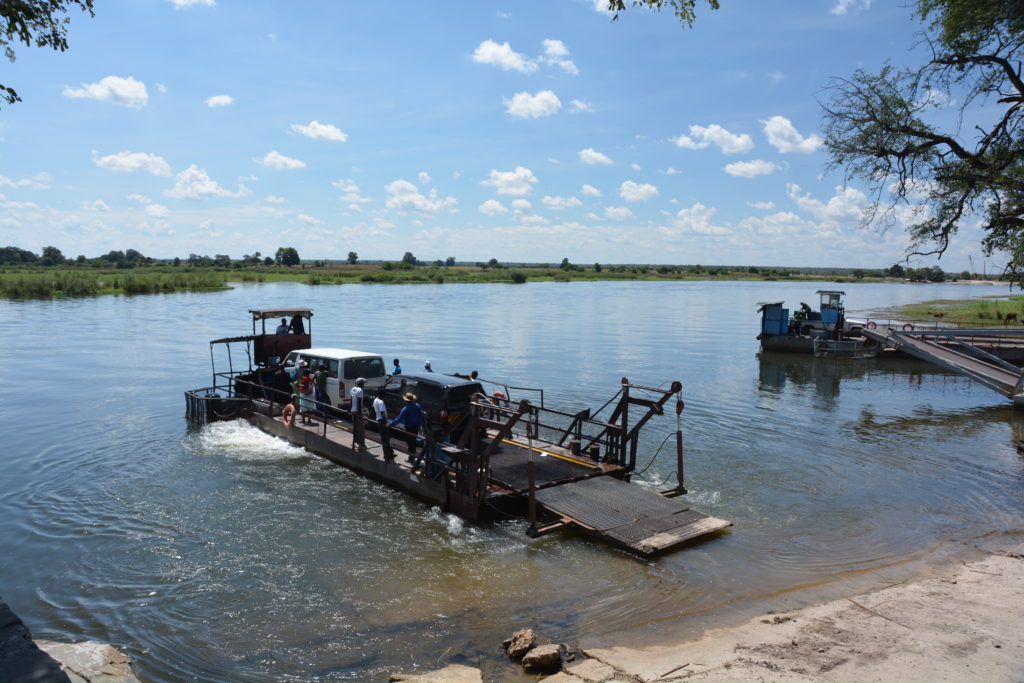
A local ferry takes their equivalent of a full load across the Okavango River to the continuation of the road
We crossed out of Botswana and into Namibia without any fanfare – we love these border crossings compared to the hours-long torturous affairs in Central and South America – and immediately crossed into Bwabwata National Park, one of Namibia’s foremost fenced parks for game. Always keen for a game hunt, we saw many of our old favourites but also found a small herd of Roan Antelope, a new animal for us and our 48th new African animal on our list (not including birds which are completely uncountable).
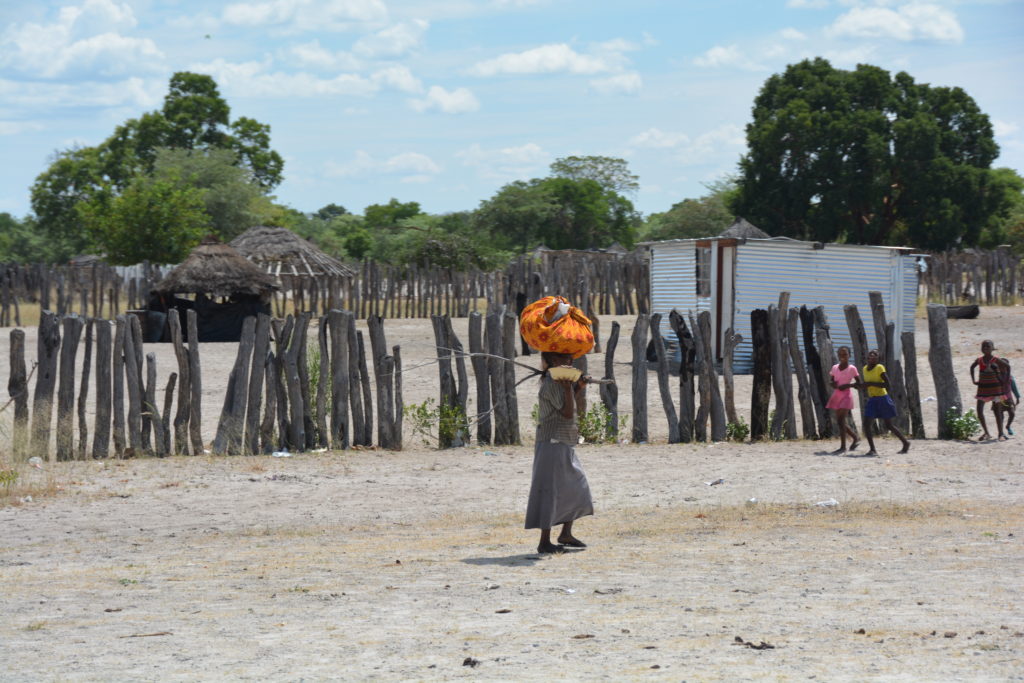
The village scenes in Namibia were similar to Botswana – people getting on with life no matter what their circumstances
We followed the good roads of Namibia’s northern stretches, the Okavango River on our right separating us from Angola, and camped that night at a beautiful rest camp on the banks of the river. Namibia was off to a ripping good start.
The next morning we drove into Rundu, the country’s second largest city with only about 60,000 people. As an indicator for what was to come, Namibia has only about 2.6 million people spread across its huge country, making it the second lowest density of population for any country in the world, beaten only by Mongolia.
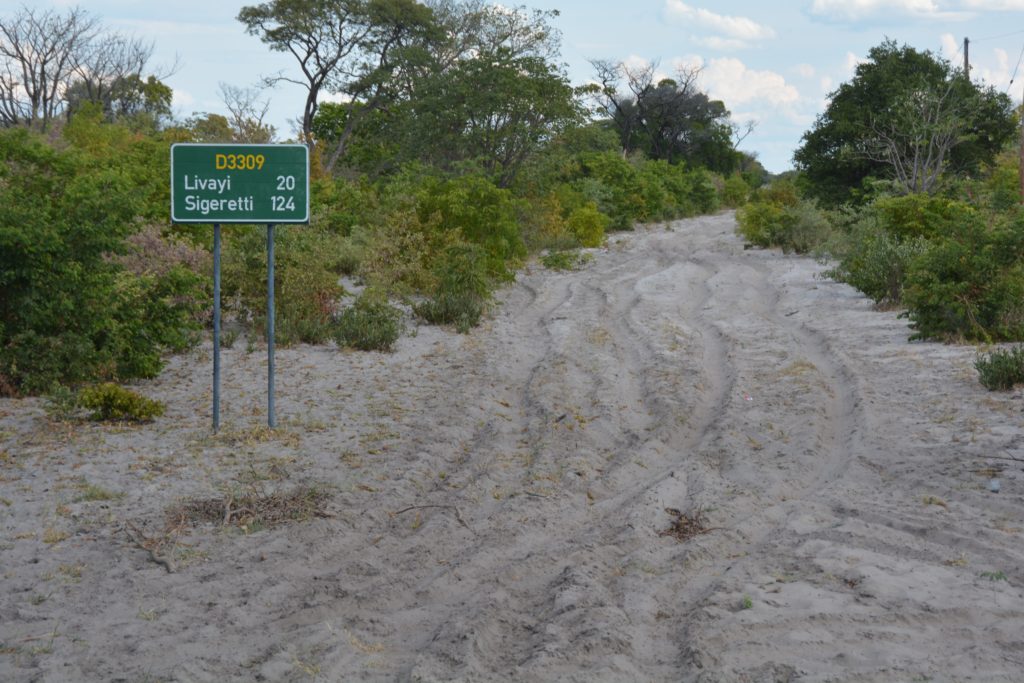
The main road had many well marked but rarely travelled side roads. Pity the people who live in Sigeretti.
Rundu, as it turned out, was the big smoke. And just as well because after doing some shopping we pulled into a smartly-run tire shop to get another tyre’s slow leak fixed. Sure enough, the guy pulled out a rivet that we probably picked up the previous night and patched us up again. Tyres take a beating in Africa, a proven fact.
We headed southwest across vast flat scrubby plains, hardly a car or any sign of life for hundreds of kilometres. It was numbing stuff, northern Namibia in full bore, but our destination for the night was the world famous Etosha National Park, the country’s premier park for game viewing. We camped that night at a guest farm just outside the park and the next morning entered the park at sunrise.
Etosha National Park is a vast preserved area in the central part of northern Namibia, famous for its expansive dry pan of the same name and for the huge numbers of animals. And as we learned, what it lacks in diversity it makes up for in quantity.
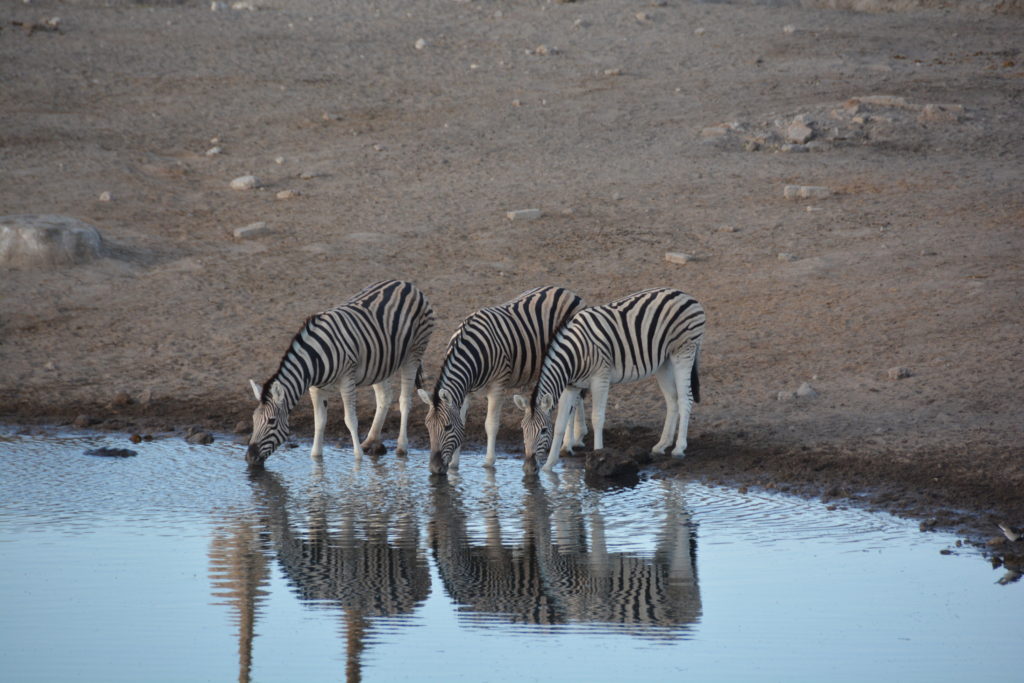
In dry Etosha National Park the waterholes are where all the action is – including these beautiful and matching zebras
Like most game parks in southern Africa, Etosha has sunk bore wells in key locations which have a solar-powered pump and provide animals with reliable water in drought years and in the dry season. Following a local tip on which waterholes might be the best to visit we spent the day driving through this dry countryside from waterhole to waterhole with the occasional foray along the edges of the huge Etosha Pan and on one occasion across a short section of the pan.
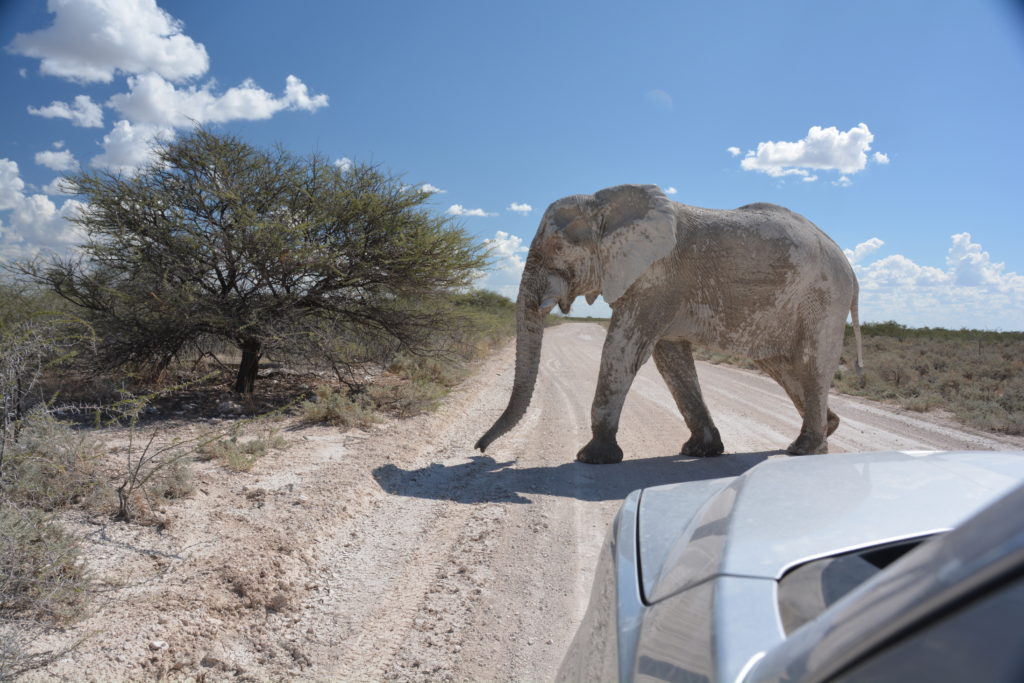
Hey, get off our road! This mud-covered elephant just wandered across the road like we weren’t there.
Julie and I easily slotted into the game viewing groove again, our new favourite sport, and we revelled in the hunt for Africa’s finest. But as we’ve learned on countless occasions, at the end of the day viewing wild game is largely about luck – are you in the right place at the right time for a herd of elephants to cross in front of you, for rhinos to emerge from the trees or for lions to stand up and show themselves above the high veld grass. One second and you have a memory for a lifetime, another second and its just another lonely stretch of dirt track. Over the last couple of months we’ve had both experiences in spades.
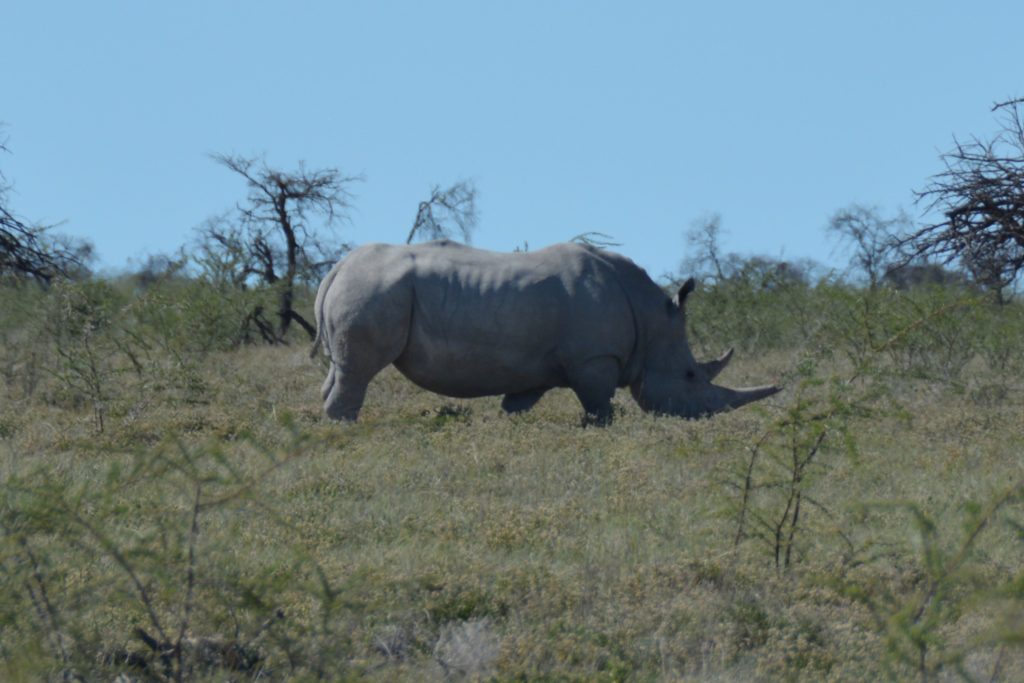
A lone white rhino ambles across the veld, his huge girth and imposing horn ensures everyone keeps a wide berth
Etosha certainly delivered the goods for us. We saw all the usual suspects, herds of zebras, impalas, springboks and wildebeests, plus strong showings of jackals, red hartebeest, giraffes, ostriches, gemsboks, kudus and a handful of elephants. The land was flat, dry and sparse, the thermometer was sky high and the waterholes were very low. We loved it.
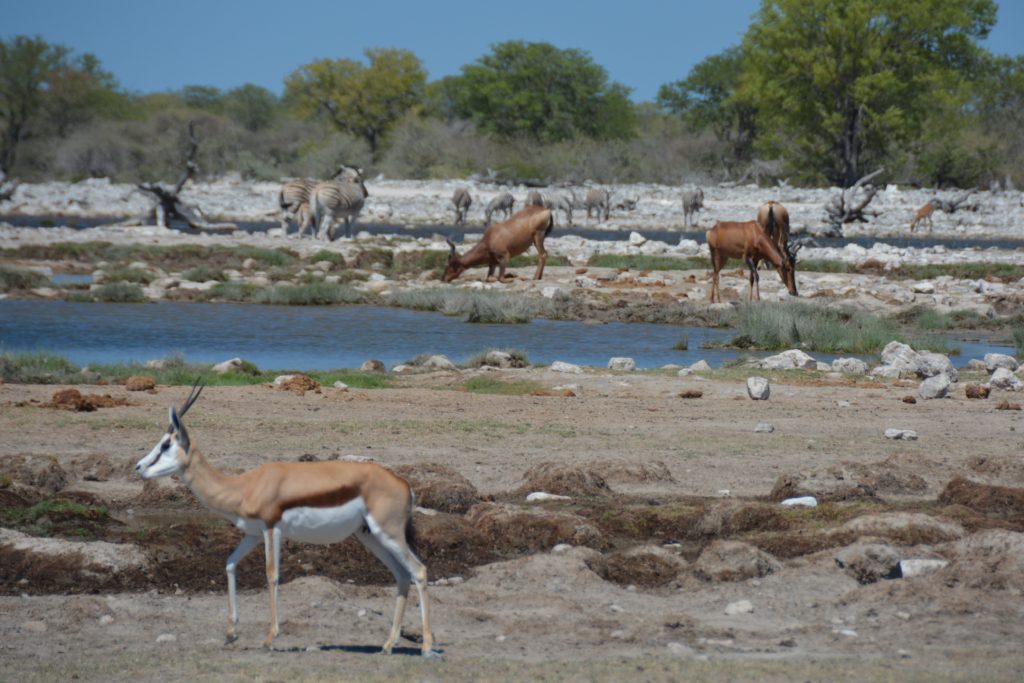
We loved how many different herbivores would share a waterhole at one time – here we have springboks, red hartebeests, zebras and impalas all together
Our camp that night, one of the dour government campsites in the park, was near a major waterhole and instead of the customary late afternoon game drive we walked down to the waterhole, camera, binoculars and a few beers in hand, and watched the ebb and flow of animals as they came down for their evening drink. The sunset was stunning, Discovery Channel live in front of us.
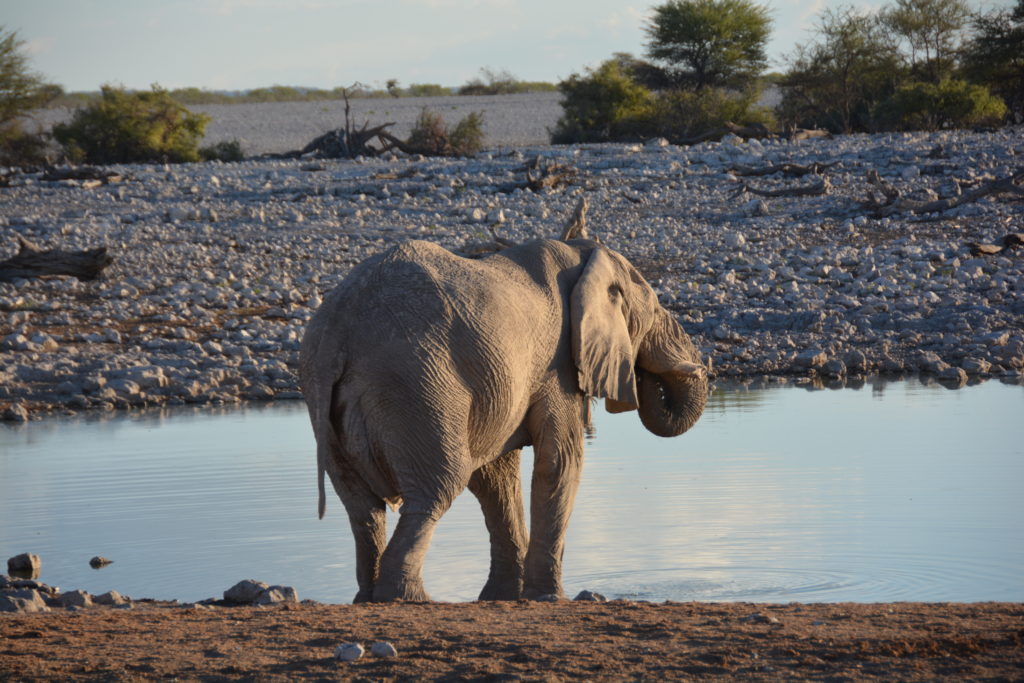
A large male elephant came down to the water to have a drink, perfect entertainment at the end of a great day
After dinner we walked back down to the waterhole, now lit with powerful lights, and joined the small crowd to see what might happen. And we didn’t have to wait long as three beautiful male lions sauntered from the edge of darkness down to the water, laid down and began to lap up their evening drinks. This was very cool, the herbivores had had the waterhole earlier but now it was time for the big boys, the top of the food chain, to run the house. Eventually they wandered back off into the darkness, not a worry in the world, kings of their domain.
We had enjoyed the San peoples’ rock paintings in Tsodillo Hills Botswana but Namibia sported their own UNESCO World Heritage location with San rock engravings (not paintings) at a site called Twyfelfontein. We drove south through increasingly dry and barren land, sandy desert and low rocky mountains, to see these rock engravings that have been dated from 2,000 to 6,000 years ago. The stark desert setting and stunning rock engravings more than made up for the lifeless guide we endured.
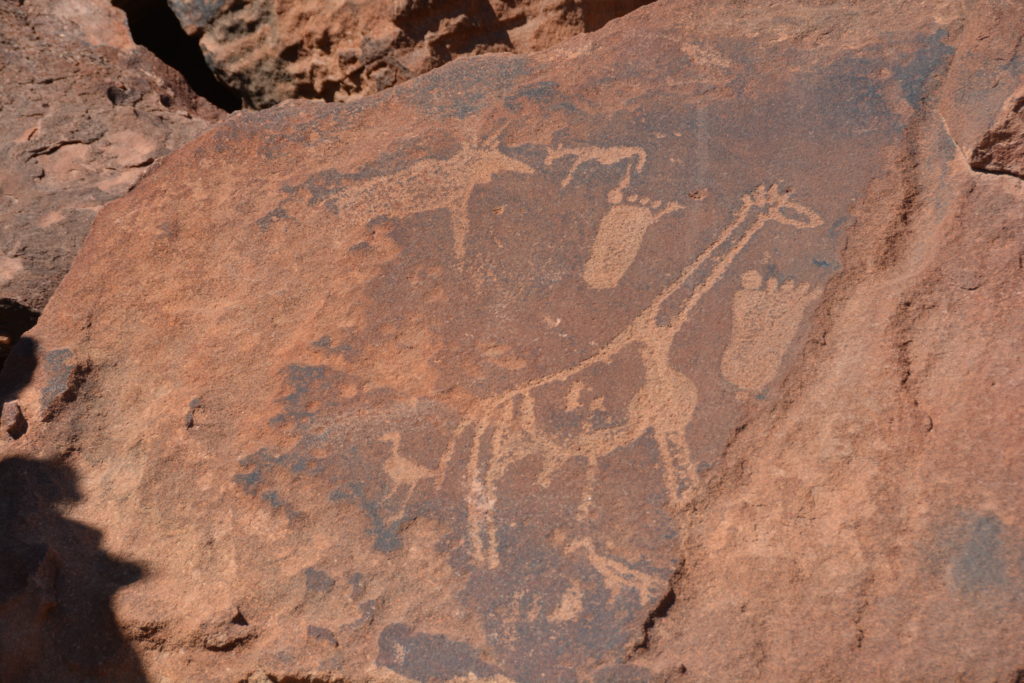
A giraffe, eland and other animals – plus rare human foot prints – still looking grand after a couple thousand years
Cast amongst the desert landscape we also had a chance to stop at a petrified forest, one of very few similar sites in the world. Here huge trees had been washed down from central Africa in some sort of epic flood, were buried under 1,000 metres of earth for about 260 million years and have now emerged in all their hard rock glory. Never mind the 38C/100F heat melting us, Julie is seriously into trees and geology so this fix touched on two of her favourite subjects. Great stuff.
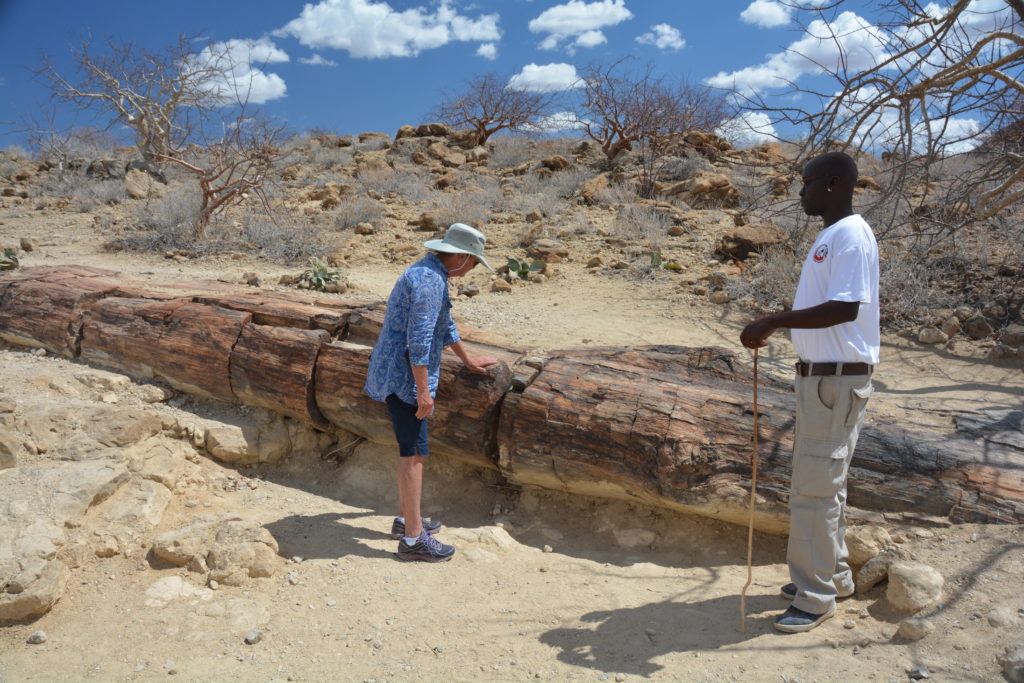
Julie and our guide admiring a petrified tree trunk that has risen from the earth after millions of years under ground
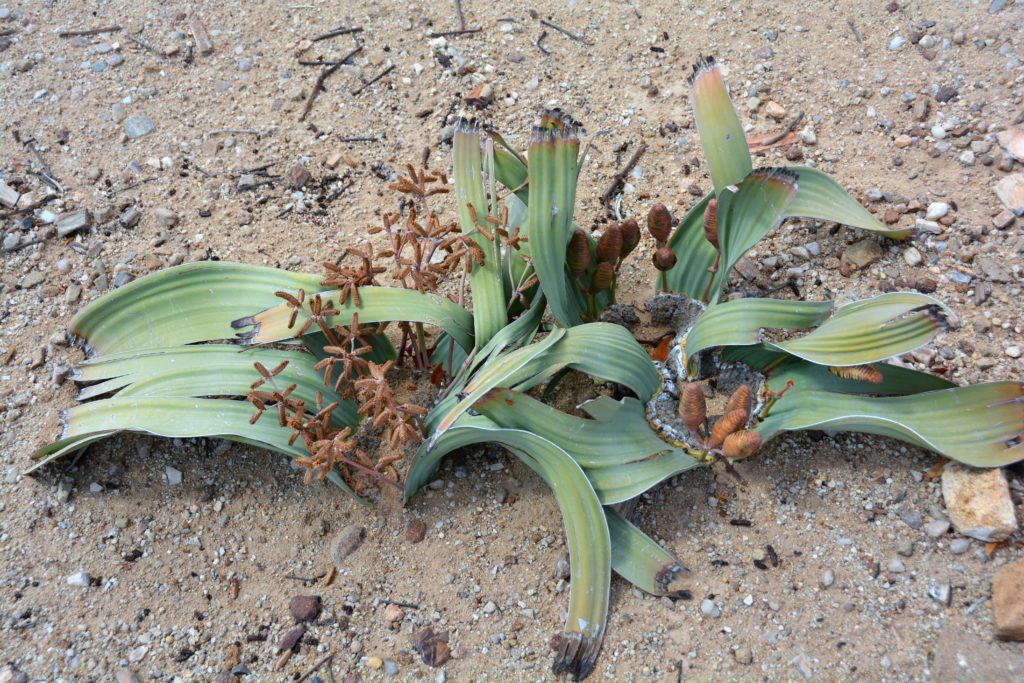
This strange plane is called the Welwitschia, found only in the Namibia desert and said to live up to 2,000 years old. This photo is of a young male and female side by side in perpetual mating position.
We camped that night in a secluded little spot amongst the red rock hills of this desert oasis, loving the mountains, ancient history and wild animals. But we were soon to head to the coastline and take in some of splendours of Namibia’s Atlantic coast. Can’t wait.
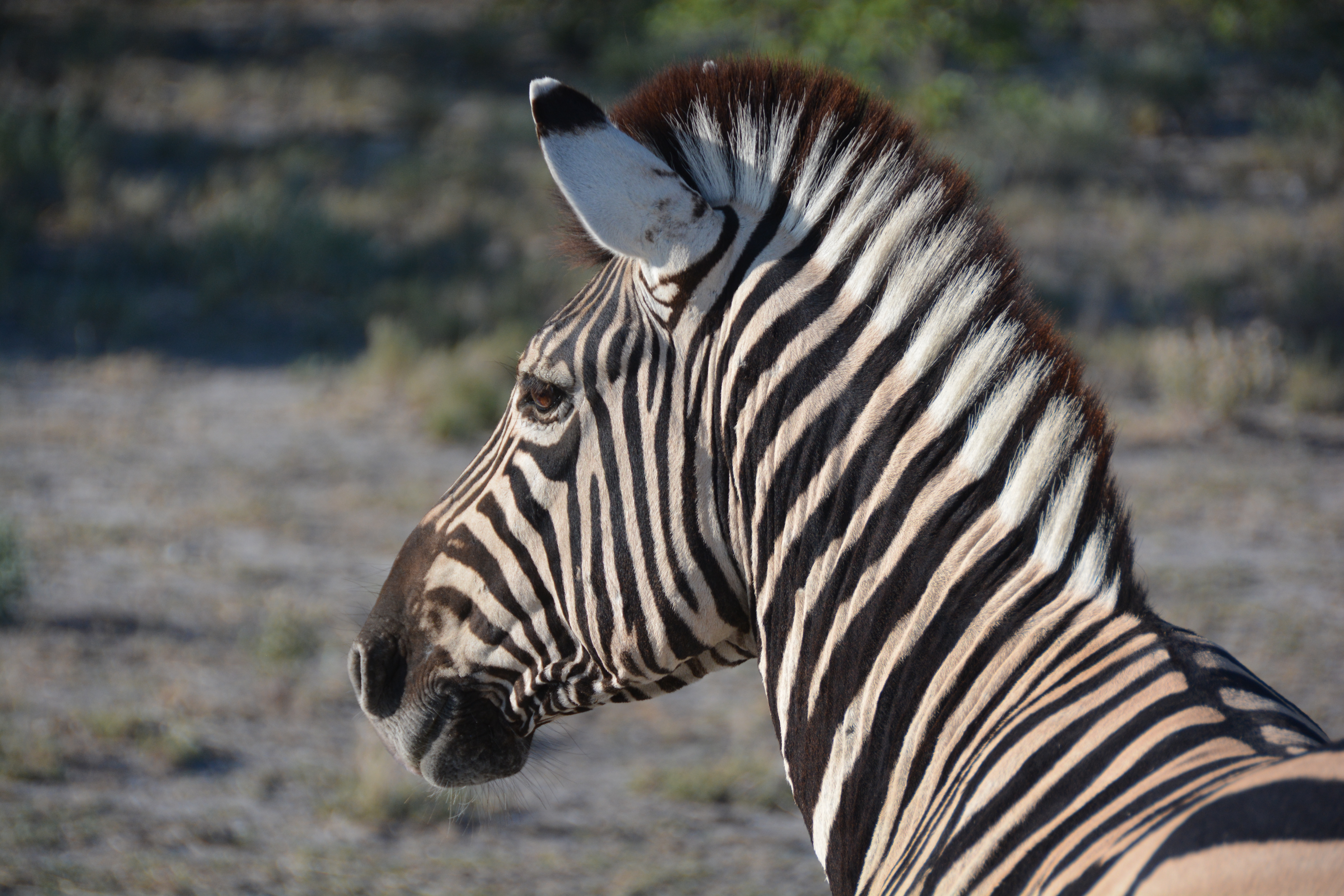






















Comments
Where old things are — No Comments
HTML tags allowed in your comment: <a href="" title=""> <abbr title=""> <acronym title=""> <b> <blockquote cite=""> <cite> <code> <del datetime=""> <em> <i> <q cite=""> <s> <strike> <strong>